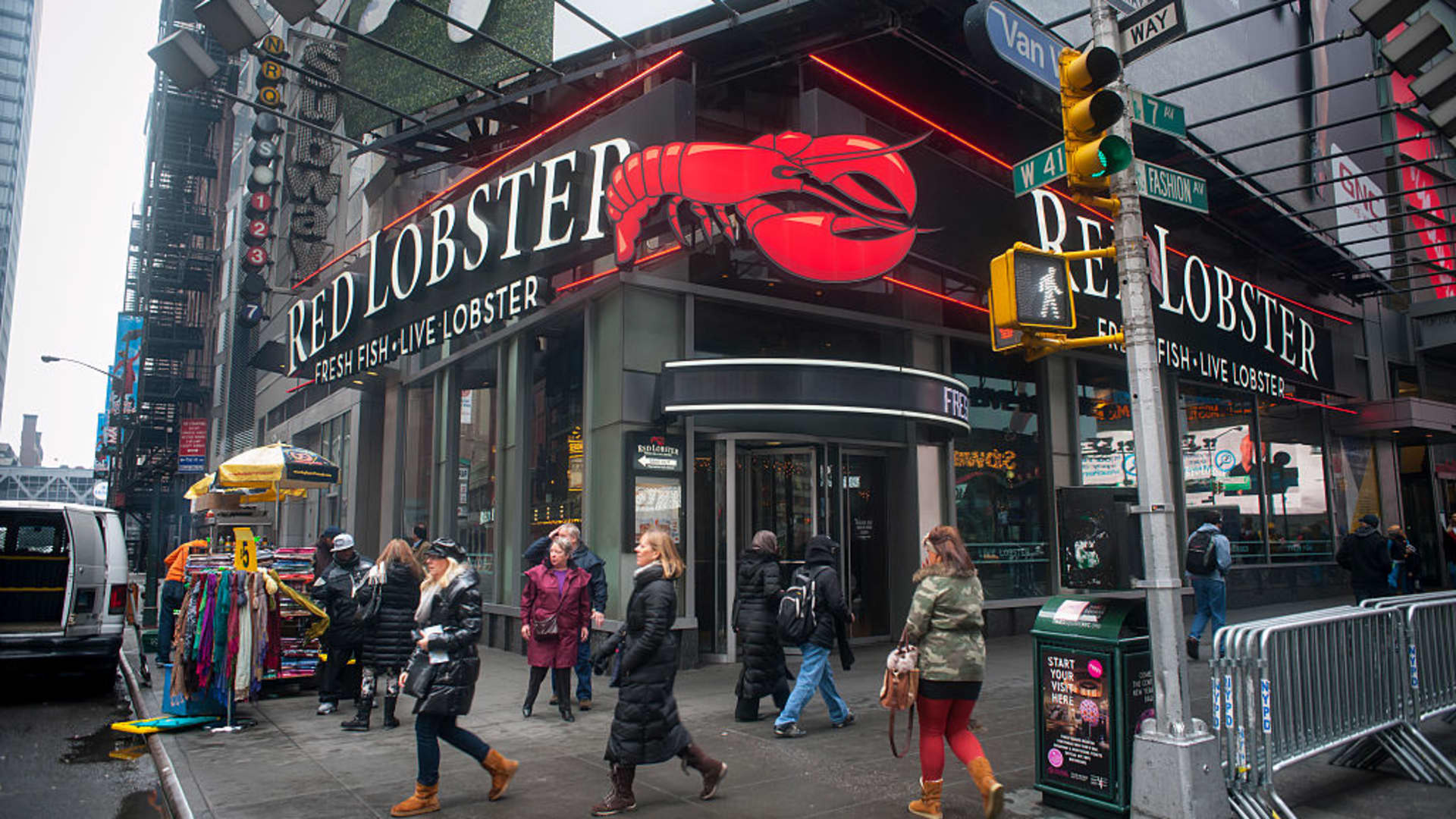Beleaguered seafood chain Red Lobster is seeking a buyer as it looks to avoid filing for bankruptcy, CNBC has learned.
The company has considered filing for bankruptcy to help it restructure its debt and get out of a number of costly and lengthy leases, but it’s also sought a buyer in recent months, people familiar with the matter told CNBC.
At least one firm had been interested in buying the chain, but a deal never came to fruition.
It’s unclear how the chain will ultimately resolve its financial woes. Red Lobster could secure a buyer, it could declare bankruptcy or its lenders could take control of the company.
Even if Red Lobster finds a buyer, it would be hard for it to avoid filing for Chapter 11 as it is trying to get out of many leases and those contracts can be difficult to break outside of bankruptcy, the people said.
Bloomberg first reported that Red Lobster was mulling a Chapter 11 filing last week. Red Lobster didn’t return a request for comment.
The longtime chain, known for its cheddar bay biscuits and unlimited shrimp, is looking for a new home at a time when capital is expensive and large restaurant groups are feeling cautious as the broader casual-dining segment lags.
For the past decade amidst ownership changes, Red Lobster has taken on debt and entered into a number of long-term leases across its 700-plus locations, which have weighed on its balance sheet.
Jonathan Tibus, a managing partner with advisory firm Alvarez & Marsal, was recently appointed Red Lobster CEO after numerous C-suite departures. That turnover has made it difficult for the chain to implement a turnaround.
The restructuring expert has decades of experience working with struggling restaurant chains, but many of them were smaller than Red Lobster. Tibus didn’t return a request for comment.
This year marks the 10-year anniversary of Darden Restaurants’ sale of Red Lobster after investors pushed the company to divest. Private equity firm Golden Gate Capital bought the seafood chain for $2.1 billion and embarked on a turnaround.
Thai Union Group, a seafood supplier and longtime Red Lobster vendor, bought a minority stake in the chain in 2016. With the help of an investor group dubbed the Seafood Alliance, it bought out Golden Gate’s remaining stake in 2020, months into the pandemic.
Unlike many restaurant companies, Red Lobster survived the pandemic without filing for bankruptcy. But longtime leader Kim Lopdrup retired in 2021, beginning a revolving door of CEOs.
Kelli Valade took the top job in 2021, but left a year later to become CEO of Denny’s. Horace Dawson, hired more than a year after Valade’s exit, was in the job for around six months before the company named Tibus as chief executive in March.
But Red Lobster’s problems are bigger than a leadership vortex. The broader casual-dining segment has struggled for roughly two decades in competition with fast-casual chains like Panera Bread and Chipotle Mexican Grill. The pandemic exacerbated the issue, particularly hurting full-service restaurants like Red Lobster.
The seafood chain has also struggled from some self-inflicted wounds, most notably its disastrous “endless shrimp” promotion. Last year, it changed the offer from once a week to daily to boost slower sales in the second half of the year.
But the offer juiced business too much as diners sought cheap deals, pressuring Red Lobster’s bottom line. As a result, Red Lobster reported $11 million in losses in the fiscal third quarter and $12.5 million in losses the following quarter.
In January, Thai Union Group announced plans to sell its stake in Red Lobster.




















Discussion about this post